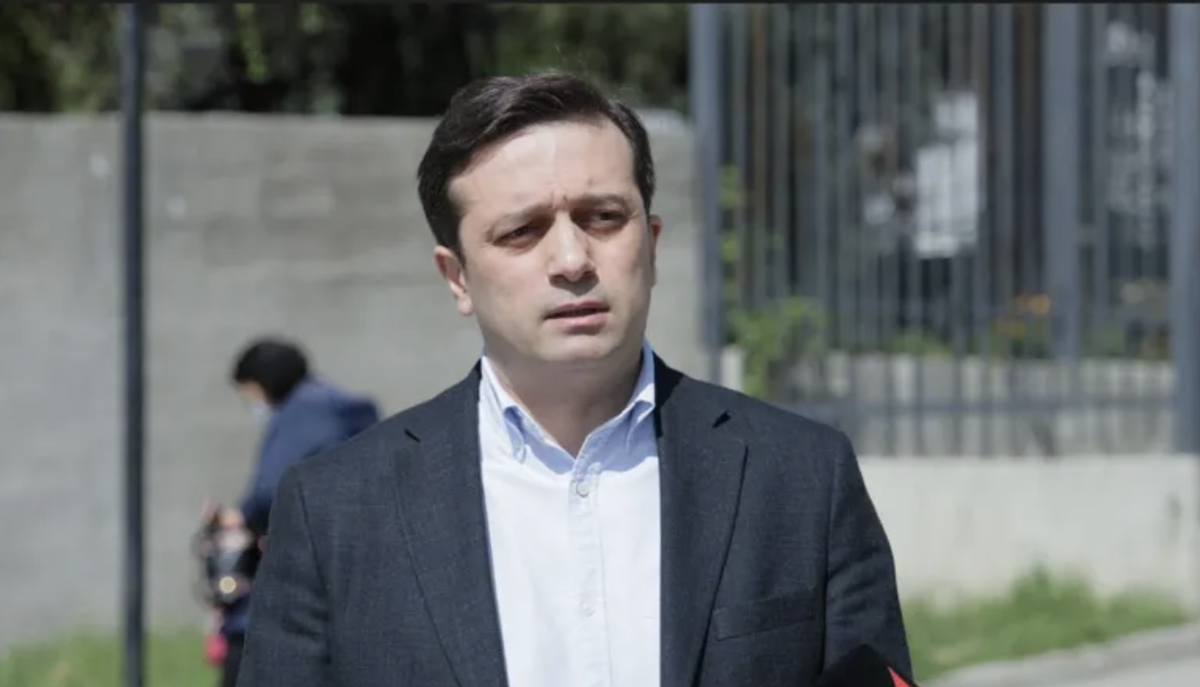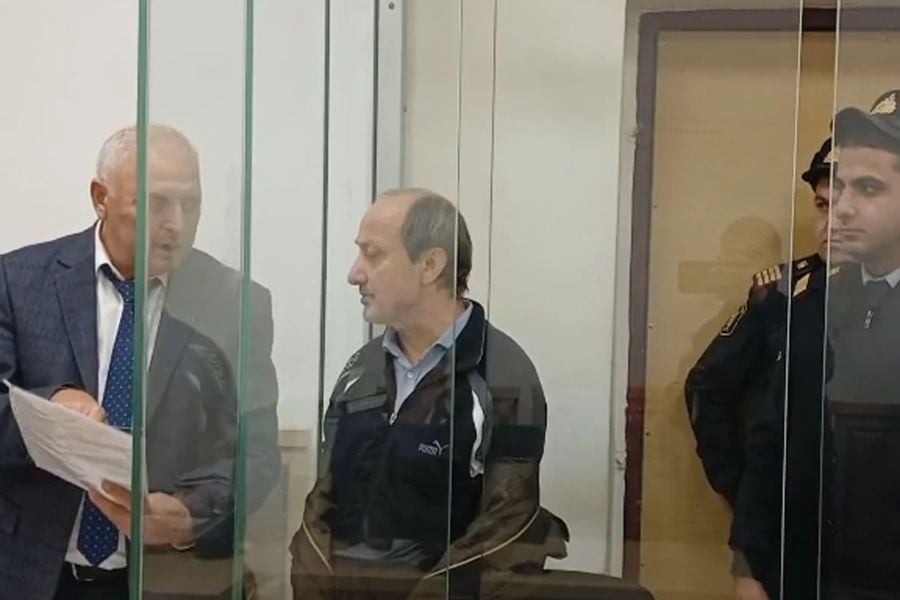Nagorno-Karabakh: the day before the truce
Photolure
April 4: Casualties
The small coffin of Vaginak Grigoryan, 12, is covered with red and white spring flowers. On the morning of April 1, Vaginak was on his way to school with his two brothers when the Azerbaijani armed forces started shelling the area with a ‘Grad’ multiple rocket launcher.
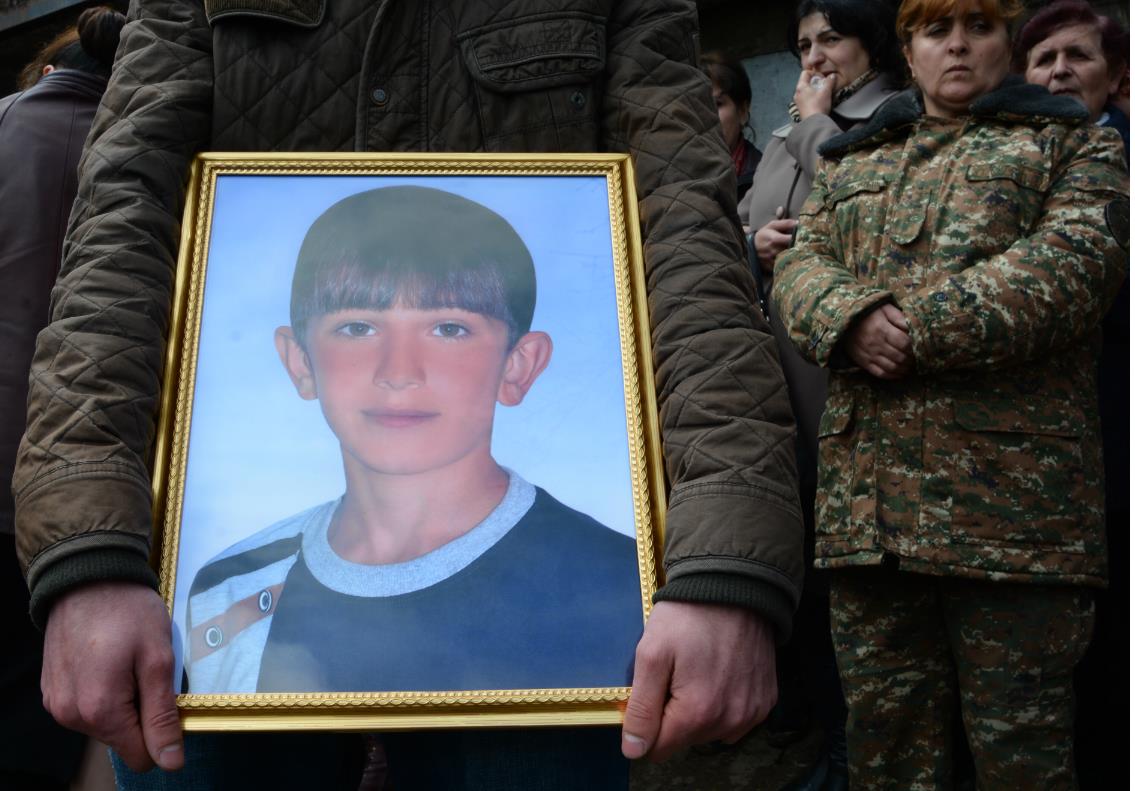 Photo by Knar Babayan
Photo by Knar BabayanThe boy was in school, pursuing knowledge and growing into a young man. He was ready to return into his mother’s arms after school, but he did not get there. His brothers turned out to be more lucky. One of them was seriously wounded and lost a leg, and the other one was only slightly injured.
In various settlements throughout Nagorno-Karabakh, people are burying civilians and servicemen, who have been killed as a result of large-scale military actions. War broke out on April 1 along the entire line of contact of Karabakh and Azerbaijani forces. Azerbaijan is extensively using the arsenal that it has procured in recent years, including Russian-made ‘Grad’ multiple rocket launchers, as well as Israeli UAVs. On April 4, an Azerbaijani UAV shelled a bus with civilians in Martakert region, killing 7 people.
The Karabakh side lost 20 military personnel and 11 civilians over the course four days. 26 more servicemen are reported missing. The number of wounded has reached 100. This data was provided by Viktor Arustamyan, Head of NKR Defence Ministry Operations Division, at a news conference late on April 4. According to his statement, about 300 people were killed on the Azerbaijani side.
The Azerbaijani attack on April 1 was unprecedented since the signing of a truce in May 1994. Within a short period of time, Azerbaijani Armed Forces managed to occupy a number of strategic high-elevation locations in north-eastern and south-eastern parts of the contact line. However, the Karabakh army managed to regain the majority of them back, as a result of fierce fighting.
As of April 4, NKR leadership officially confirmed that the Armenian army has not yet managed to regain 8 combat positions, three of which are in the north-eastern, Martakert region and 5 of which are in the south-eastern, Horazid region. There were intense battles.
According to our data, the Karabakh army had been tasked with recovering all of its lost military posts, and it is senseless to talk about cessation of hostilities until that has happened.
What’s going on
Who started shooting this time? Who is guilty? Such questions may be interesting for theorists studying the conflicts, political scientists, as well as those, pursuing their own interests in the Caucasus, but not for Nagorno-Karabakh with its 150-thousand population, where civilians, including the children hurrying to school, are killed again.
The hostilities are accompanied by information war. The Azerbaijani side’s allegations about Nagorno Karabakh Armenians sustaining serious military and territorial losses, are not true. Though the civilian population of the two villages of Martakert region – Talish and Matagis – have been evacuated, Baku’s statements that they allegedly occupied those villages are inconsistent with reality.
Azerbaijani Armed Forces managed to advance some 100-250 meters at certain sections along the entire contact line. Despite the intensive bombardment, they failed to occupy any of the civil settlements. As of April 4, local trench wars were underway for 250 meter sections.
Given the interest of local and foreign media to the 4-day intensive fighting along the entire contact line of Karabakh-Azerbaijani armed forces, an operational center has been set up on the initiative of the NKR Defense Ministry with the aim to provide information on the situation at the front.
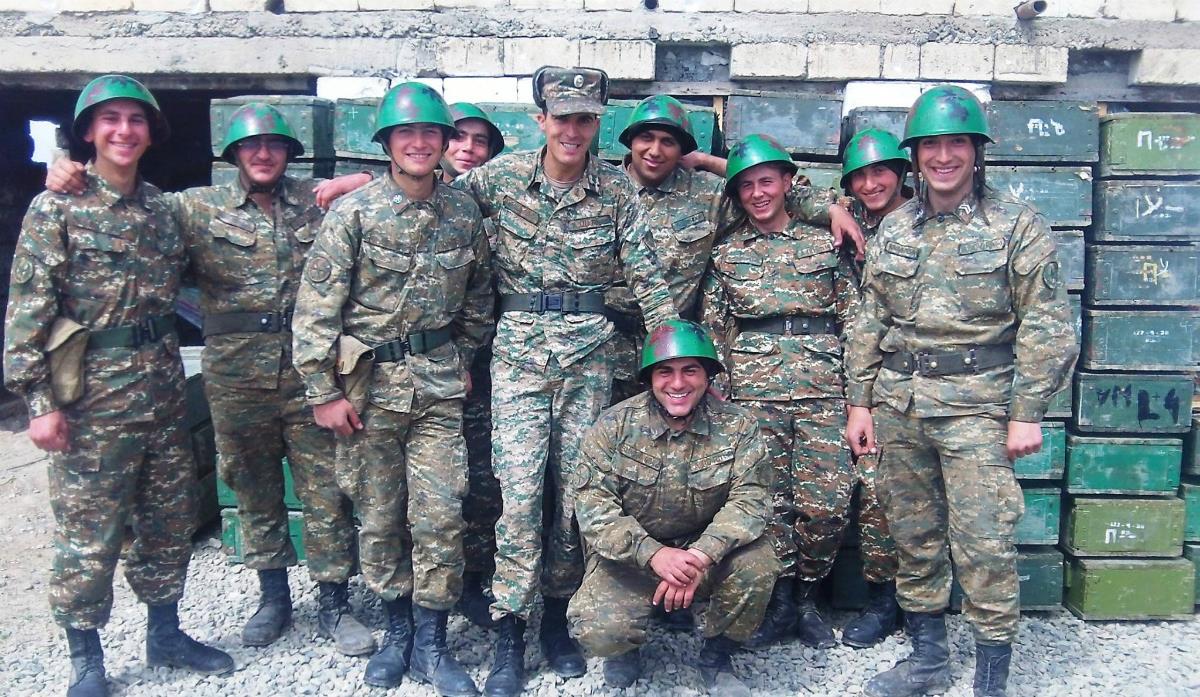 Photo by Yana Shakhramanyan
Photo by Yana ShakhramanyanAccording to the Karabakh army, during the four-day hostilities along the contact line, Azerbaijani armed forces lost 18 tanks, 3 armored vehicles, 1 unit of engineering heavy equipment, 2 helicopters, 6 UAVs and one “Grad multiple rocket launcher. The Karabakh party lost seven tanks during the same period.
The impression from the spot
I’ve been here since April 1. We are visiting dozens of settlements located adjacent to the contact line and can assure, there is no panic among the civilians. Life in Stepanakert runs its natural course. The resident of Nagorno-Karabakh’s second largest town – Martakert are facing serious problems. It is being constantly shelled from the Azerbaijani side, including from ‘Grad’ multiple rocket launcher, since it is located in the vicinity of the contact line.
On April 3, I spent 3-4 hours in Martakert and at least 30 shells fell on the town time. Martakert population has not been evacuated: during the shelling the civilians are hiding in the bomb shelters.
As NKR President’s Spokesman, David Babayan, stated late on April 4, if Azerbaijan delivered a blow against Stepanakert and other huge cities of Nagorno-Karabakh, the military actions would shift deep into Azerbaijan’s territory.’ Earlier, the Azerbaijani Defense Minister ordered all types of forces, including missile and artillery troops, to be ready to deliver a devastating blow on Stepanakert and other ‘occupied populated areas’, using heavy armament at the Azerbaijani Armed Forces’ disposal.
Needless to say that the hostilities will not be stopped without serious international, including diplomatic, intervention. According to Stepanakert’s military and political leadership, the Karabakh army successfully repel the attacks of the Azerbaijani side and is ready for new offensives in the long run.
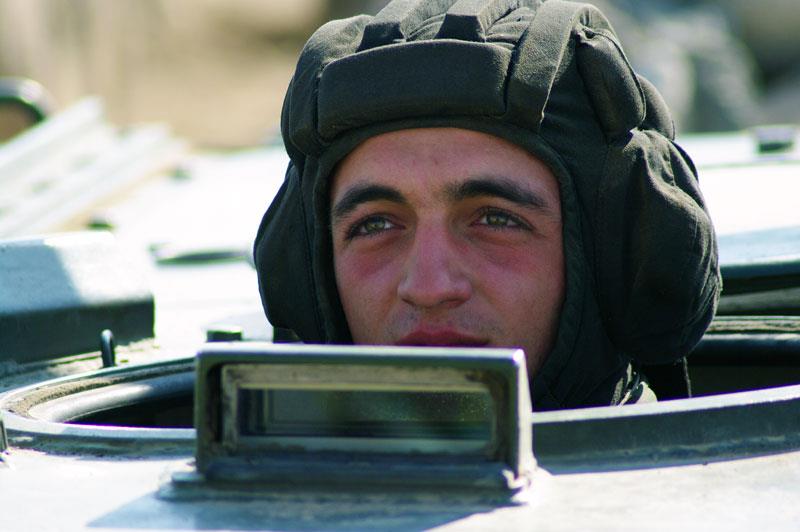
As people in Stepanakert point out, in order to stop the hostilities, the Azerbaijani side should return its forward units to their original positions prior to the first attack on April 1. Otherwise, the Karabakh army will settle the issue by force.
Why has it happened now?
The hostilities on the contact line of Nagorno Karabakh and Azerbaijan could have been a surprise for the world community, but not for the leadership and residents of Nagorno-Karabakh.
Azerbaijan lost the 1991-1994 war and has been recently pursuing an arms race, competing with Armenia and Nagorno-Karabakh. Naturally, this weapon was to be finally applied.
But why now?
Nagorno-Karabakh’s political and military leadership notes several reasons for an unprecedented escalation:
• Firstly, it is a domestic political and economic situation in Azerbaijan. Azerbaijani leadership is trying to divert public attention from the country’s economic situation and to mobilize public opinion around itself.
• Secondly, people in Stepanakert tend to think that being Azerbaijan’s #1 partner and strategic ally, Turkey has it’s role and interest in an unprecedented spring escalation.
• People here are not inclined to agree with the0 version, that is much discussed by the Western press – that the given situation plays directly into the hands of Russia, which is willing to implement its plan of 1990 – to deploy Russian peacekeepers between Nagorno Karabakh and Azerbaijan, like it managed in Abkhazia, in 1994 .
• Another possible reason is also indicated: through an unprecedented tension Azerbaijan is trying to frustrate the OSCE Minsk Group’s proposal to develop effective mechanism for investigation of incidents on the contact line. In the recent years, Azerbaijan has been consistently ignoring the OSCE Minsk Group’s continuous calls for withdrawal of snipers from the front line.
Who is interested in a new war?
People in Nagorno-Karabakh are sure, Azerbaijan is interested in escalation of the situation on the contact line and a new war, since it has lost and is now seeking revenge. Azerbaijan did not start a new war in the past 20 years for several reasons, among which the most important were the ongoing negotiations. The more Azerbaijan makes sure that it cannot achieve the desirable variants of conflict resolution through talks, the more is the danger and likelihood of a new war.
Violation of the ceasefire regime is, first of all, in Azerbaijan’s interest, since the present-day status quo is more acceptable for the Aremenian side. Since the negotiations have come to the deadlock, Baku is trying to draw attention to the Karabakh conflict by using the weapons.
Besides, through frequent violations of the ceasefire regime, Baku seeks to force the Armenian side to make concessions at the negotiation table. This can be also considered as one of the reasons of the present tension.
The opinions expressed in this article, convey the author’s terminology and views and do not necessarily reflect the position of the editorial staff
Published: 07. 04. 2016













